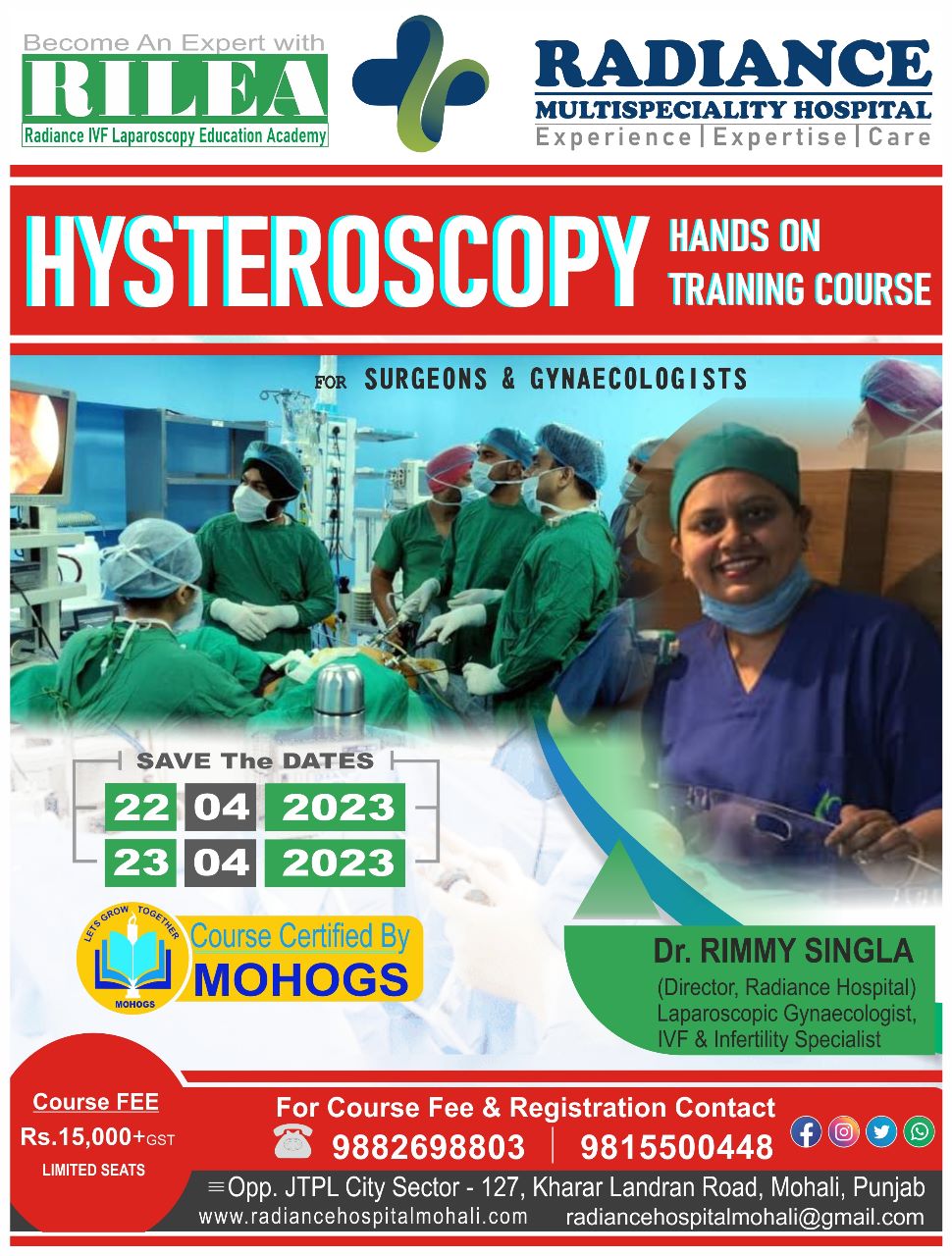A two day Training Course on Hands on Hysteroscopy is scheduled at Radiance Hospital for Medical Professionals, Mentoring by Dr. Raman Singla & Dr. Rimmy Singla
Benefit of learning Hysteroscopy:
Studying hysteroscopy can also provide many benefits to Gynaecologists & Surgeons Hysteroscopy is a minimally invasive surgical technique that involves inserting a small camera called a hysteroscope through the vagina and cervix to view the inside of the uterus.
Here are the benefits of learning hysteroscopy for your medical career:
Accurate diagnosis of uterine conditions: Hysteroscopy allows for direct visualization of the inside of the uterus, which can help diagnose conditions such as fibroids, polyps, and adhesions. This can lead to more accurate diagnoses and more targeted treatment plans.
Minimally invasive surgical intervention: Hysteroscopy can also be used to perform minimally invasive surgical procedures, such as removing polyps or fibroids from the uterus. This can result in less pain, shorter hospital stays, and quicker recovery times for patients.
Increased patient satisfaction: Patients often prefer minimally invasive procedures over traditional open surgery because they experience less pain, shorter hospital stays, and quicker recoveries. By learning hysteroscopy, you can offer your patients a less invasive option that may improve their overall satisfaction with their medical care.
Competitive edge in the job market: Like laparoscopy, hysteroscopy is becoming an increasingly popular technique in surgical practice. Having experience in hysteroscopy can give you a competitive edge in the job market and make you a more attractive candidate to potential employers.
Improved outcomes and reduced complications: Hysteroscopy has been shown to have a lower risk of complications compared to traditional open surgery. By using this technique, you may be able to improve patient outcomes and reduce the risk of postoperative complications.
Learning hysteroscopy can provide you with many benefits in your medical career, including more accurate diagnoses, less invasive surgical interventions, increased patient satisfaction, a competitive edge in the job market, and improved outcomes for your patients.
